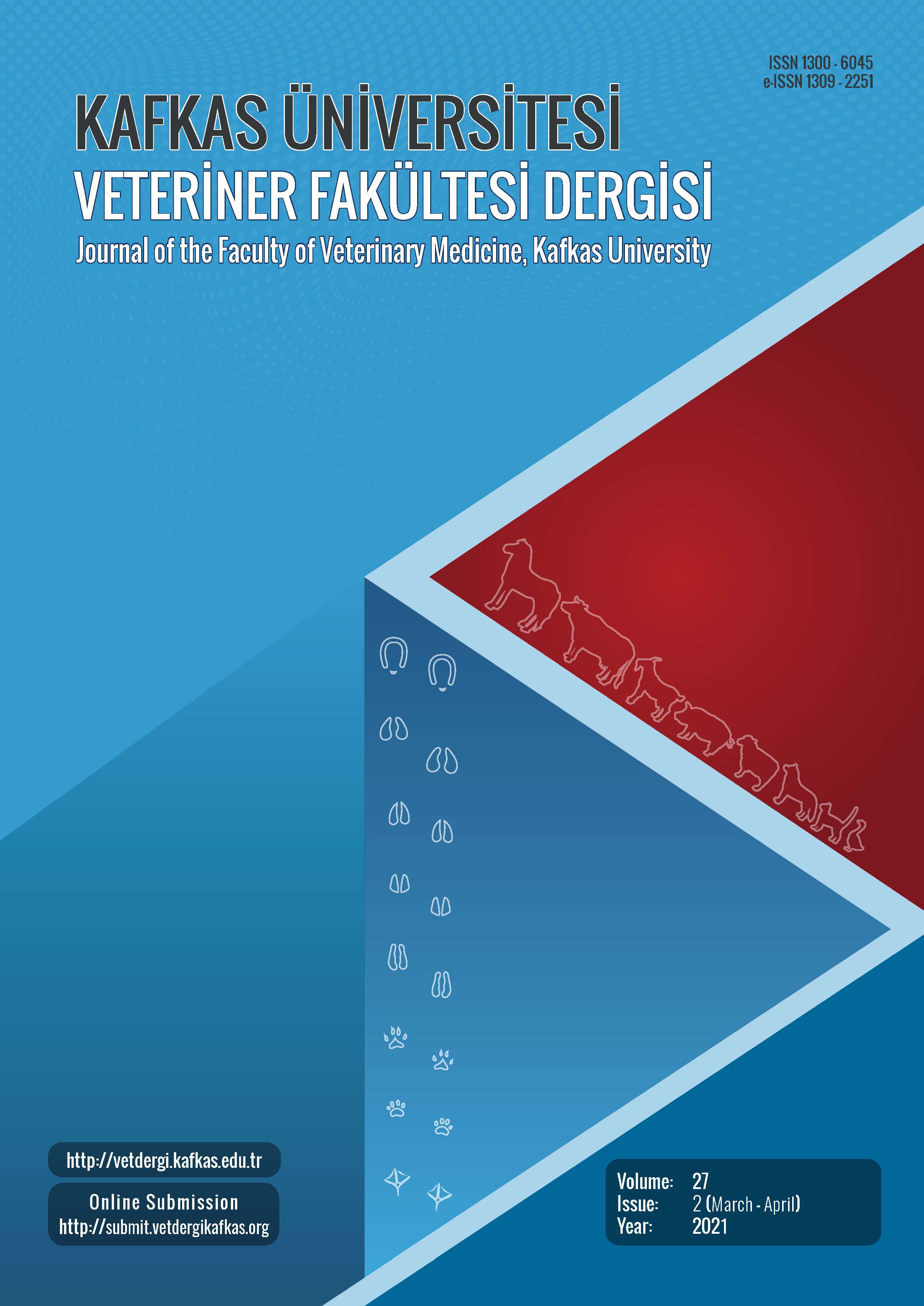
This journal is licensed under a Creative Commons Attribution-NonCommercial 4.0 International License
Kafkas Üniversitesi Veteriner Fakültesi Dergisi
2021 , Vol 27 , Issue 2
The Usability of Cytological and Immunocytological Methods for Rapid Diagnosis of Encephalitic Listeriosis in Ruminants
1Selcuk University, Faculty of Veterinary Medicine, Department of Pathology, TR-42130 Konya - TURKEY2Kastamonu University, Faculty of Veterinary Medicine, Department of Pathology, TR-37200 Kastamonu - TURKEY
3Kyrgyz-Turkish Manas University, Faculty of Veterinary Medicine, Department of Pathology, KG-720044, Bishkek, KYRGYZSTAN DOI : 10.9775/kvfd.2020.25106 Although the clinical and pathological findings are important in the diagnosis of listeriosis, to isolation or to be shown the presence of the bacterium must be required for the definitive diagnosis. This study aims to investigate the availability of imprint cytological (IC) and immunocytochemical (ICC) methods in comparison with histopathological and immunohistochemical (IHC) methods for the rapid diagnosis of encephalitic listeriosis . In the study, the touching and smear preparations taken from the pons and medulla oblongata of 25 ruminants suspected with listeriosis by neurological symptoms were stained with modified giemsa and also with ICC technic for revealing antigens, as a new method. Same tissue sections were stained with Hematoxylin&Eosin and IHC methods too, and examined under light microscope by scoring. In IC examinations, there were intensive neutrophils in 14 cases and few neutrophils in 4 cases, and no neutrophils were observed in 7 cases. In histopathological examinations, 13 of these 14 cases revealed typical microabscesses and listeria positivity in IHC staining. ICC positivity was detected in 12 (92.3%) of the listeria positive 13 cases. A highly positive correlation was observed among cytology (14), ICC (12), histopathology and IHC (13) scores (r2> 0.8; P<0.01). In conclusion, the cytological examination of the pons and medulla oblongata of listeriosis-suspected ruminants revealed that a rapid pre-diagnosis could be made with the presence of intense neutrophils. Also, with ICC staining of cytological preparations, the diagnosis could be performed with 92.3% accuracy. Since ICC is an easy and fast method, it is concluded that it can be used safely especially in field studies, along with cytological examination. Keywords : Cytology, Histopathology, Immunocytology, Immunohistochemistry, Listeriosis










